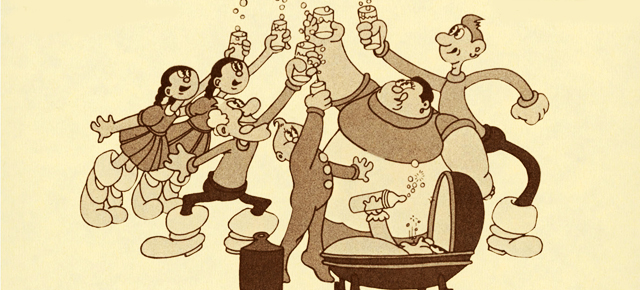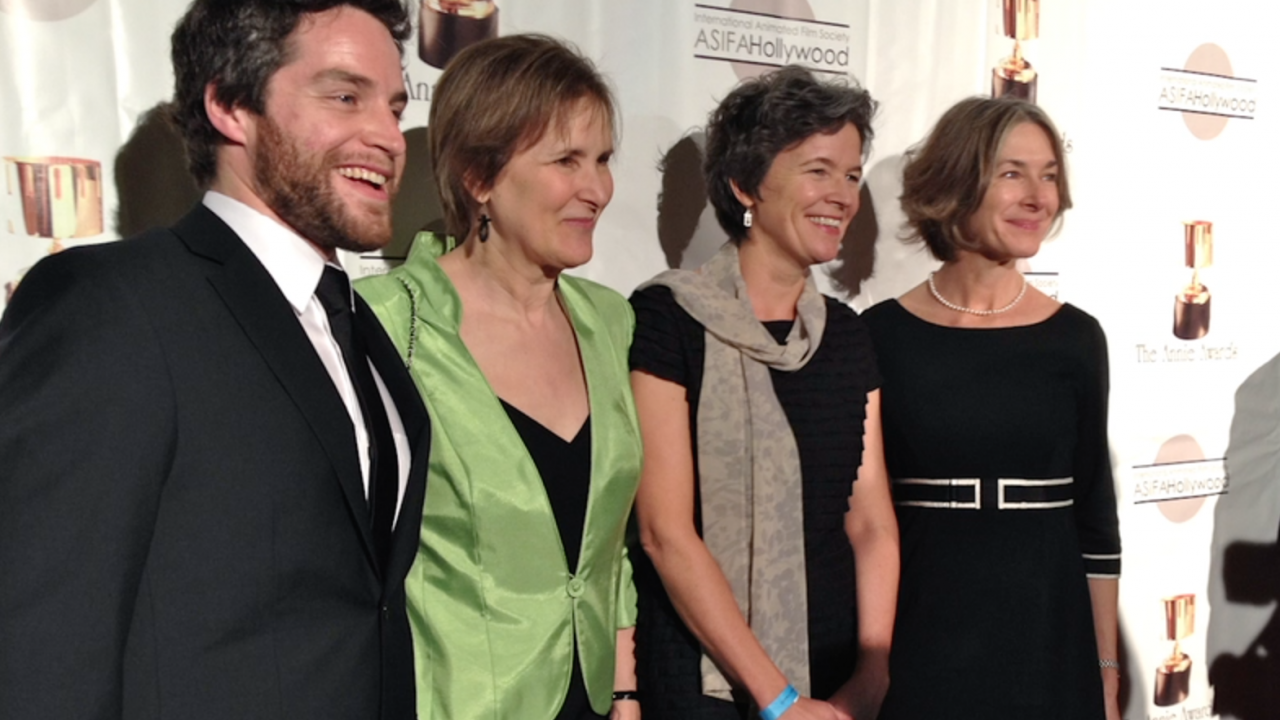
The Family That Dwelt Apart: When good intentions go horribly wrong
The Family That Dwelt Apart: When good intentions go horribly wrong
I love tall tales. The crazier the better. I especially love tall tales that have a strong message.
The NFB animated short The Family That Dwelt Apart fits in all these categories. It tells a tall tale that gets crazier as it goes along and conveys the strong messages that a) Good intentions can kill, and b) The media cause more trouble than good.
Based on the short story by E.B. White (Charlotte’s Web) that appeared in the New Yorker Magazine on July 31, 1937, the film starts off as a light, silly little tale, but as it unfolds, events soon take a turn from bad to downright awful. The titular family are fisherfolk who are content living on a remote island. Everything is going well for them until someone on the mainland decides that they need help. Like a Monty Python sketch in which things go horribly wrong, good intentions turn the world of these poor people upside down. The film also lampoons the media (circa 1930s), who pull out all the stops to create a news story but get more than a little carried away, to the detriment of the hapless inhabitants of the island.
The story was optioned by the NFB in 1965 and assigned to animator Grant Munro. He tried to find a suitable person to narrate the film but was unsuccessful. He moved on, and the project lay dormant until producer Wolf Koenig revived it in 1969, bringing in animator Yvon Mallette to direct. It was decided that White himself should narrate the story, and an NFB crew travelled to White’s home in Maine to record him.
Mallette worked on The Family That Dwelt Apart for several years until he was satisfied with the final product, which contains many clever touches and makes good use of droll narration by White (reviews of the film praised his performance and his dry, twangy, Down Eastern accent). Mallette’s cartoonish style is perfectly suited to this ridiculous tale. There are many little winks at the audience and humorous moments (I especially love the sequence that depicts the characters “sawing logs”). There are even cameos by King Kong and the Rice Krispies elves!
The film was completed in March 1973 and picked up for distribution throughout Canada by Columbia Pictures. It also played at the Annecy Animation Film Festival in June 1973, and its Canadian theatrical run led to a Canadian Film Award for best animated short. The film then won a Silver Hugo at the Chicago International Film Festival, which got it noticed in the United States. In April 1974, it was sold to the International Tournée of Animation, an annual touring program of animated shorts from around the world that crisscrossed the United States, playing at college campus theatres, art museums and repertory cinemas.
The Tournée brought the film to prominence; it was nominated for an Academy Award for best animated short (along with Hunger, another NFB film), which led to a variety of sales to distributors and broadcasters around the world—despite the fact that it didn’t win the Oscar. E.B. White was even sent a 16mm copy for his personal collection (he was very happy with the film).
The Family That Dwelt Apart remains fresh and lively. The story, even though it is set in the 1930s, is still topical. The wonderful narration is a perfect complement to the zany animation (not to mention the folksy music) and the themes are still pertinent today. As the old saying goes, the road to hell is paved with good intentions. If this had been a documentary, it would be a tragedy. As an animated fiction film, it remains a very black comedy. I invite you to watch it and be amused.
Enjoy the film.
The Family That Dwelt Apart, Yvon Mallette, provided by the National Film Board of Canada
-
Pingback: Wikispaces Links | Ms. Hassard's Classes



